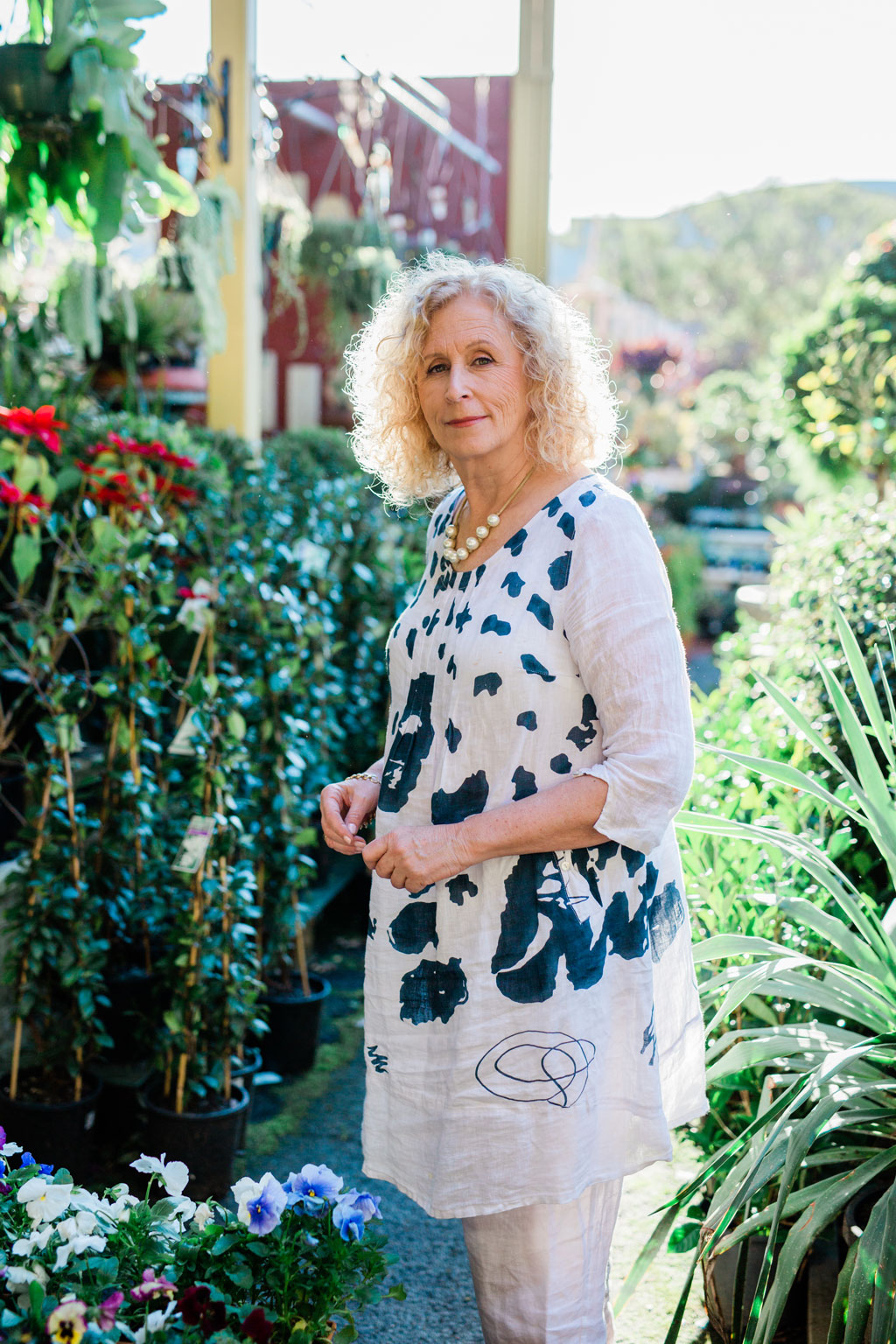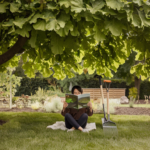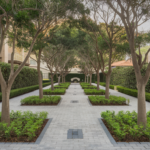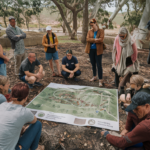MY Tips
Why Every Landscape Designer
Should Understand Tree Selection and Specification
Trees are the backbone of landscape design, providing structure, shade, and ecological value. It is therefore, crucial for landscape designers, to understand tree selection and specification. It is much more than just a technical skill—it’s a critical component of creating functional, sustainable, and visually stunning outdoor spaces. In fact, specifying the right tree for the right place ensures long-term success for your designs and satisfaction for your clients.
At Your Landscape Journey, we emphasise the importance of mastering tree selection and specification, whether you’re a student, a professional, or looking to expand your knowledge. This blog explores why these skills matter and offers practical tips to help you excel in this area.
1. Understanding Tree Selection and Specification Enhances Aesthetic Appeal and Functionality
Trees define the character of a landscape. Above all, selecting the right tree can enhance a design’s visual harmony, serve as a focal point, or provide privacy and shade.
Design Considerations for Tree Selection
- Choose trees with forms and foliage that complement the design style, such as structural trees for formal gardens or natives for naturalistic designs.
- Consider functional benefits like shade for seating areas or windbreaks for exposed sites.
- Ensure seasonal interest with trees that offer flowers, vibrant autumn foliage, or unique bark textures.
For inspiration, explore resources like the Australian Native Plants Society or the Arbor Day Foundation’s Tree Guide.
2. Ensuring Site Suitability
Selecting a tree without considering site conditions can lead to costly mistakes and client dissatisfaction. Therefore, it is essential to understand the site’s soil type, drainage, and all climate ensures the tree thrives without excessive maintenance.
Factors to Assess
- Soil Type and pH: Some species require specific soil conditions to grow successfully.
- Water Requirements: Match trees to the site’s natural water availability or irrigation setup.
- Sunlight: Ensure the tree’s light requirements align with the location.
- Space Constraints: Be mindful of growth habits and mature size to avoid conflicts with buildings or utilities.
For detailed guidance, check out Greening Australia for tree-planting resources tailored to Australian conditions.
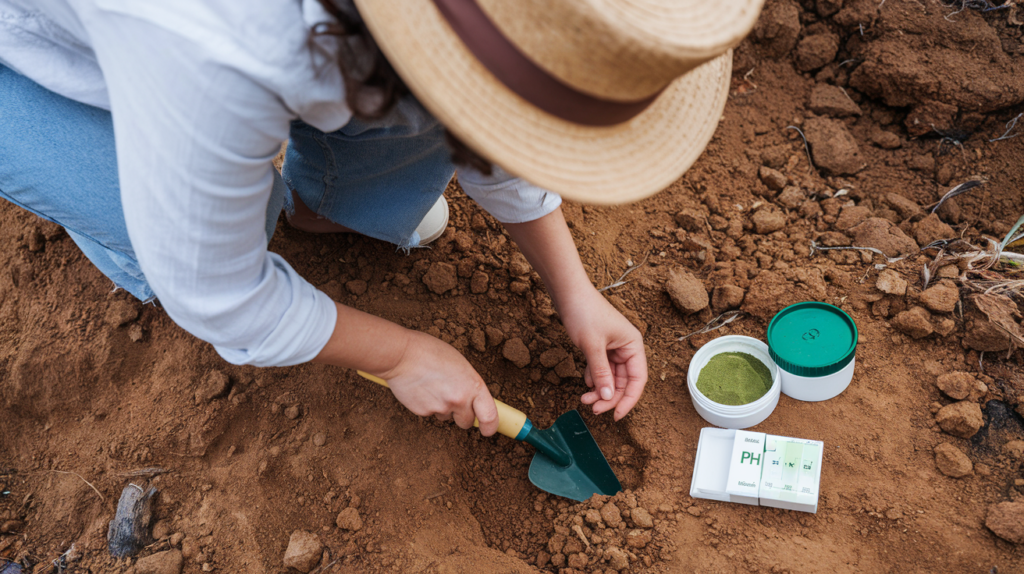
3. Promoting Sustainability and Biodiversity
Incorporating trees into your designs isn’t just an aesthetic choice; it’s a step toward creating sustainable landscapes that benefit the environment. For instance, did you know that trees can reduce urban heat islands, improve air quality, and provide habitats for wildlife.
Sustainable Tree Selection Practices
- Opt for native species to support local ecosystems.
- Include drought-tolerant trees in water-sensitive designs.
- Consider trees with edible yields, like fruit or nuts, for multifunctional landscapes.
The Australian Government’s Biodiversity Information Explorer offers excellent resources to help you make informed, sustainable choices.
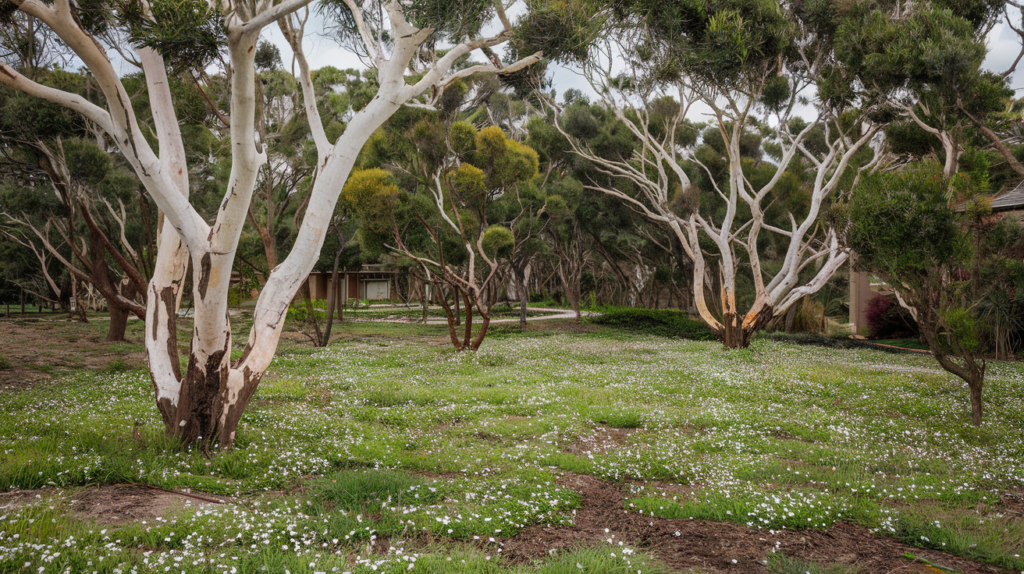
4. Managing Risks and Avoiding Problems
Incorrect tree selection can lead to issues like root damage to infrastructure, overcrowding, or excessive maintenance needs. Therefore, it is important to understand how to specify trees correctly minimises these risks.
Common Risks to Consider When Selecting Trees
- Root Systems: Avoid species with invasive roots near buildings, pipes, or pavements.
- Height and Spread: Ensure the mature size fits the space without overshadowing other elements.
- Allergen Concerns: Be mindful of trees that may cause allergic reactions for residents or users.
For more on tree management and avoiding risks, consult the International Society of Arboriculture (ISA).
5. Writing Detailed Specifications
Once you’ve chosen the right tree, documenting clear and precise tree specification is essential for contractors and nurseries. In other words, a well-written specification ensures everyone involved in the project understands the requirements.
Key Elements to Include
- Species and Variety: Clearly state the botanical name to avoid confusion.
- Size at Planting: Specify the container size or height.
- Quality Standards: Indicate nursery standards for healthy, well-formed trees.
- Placement and Orientation: Provide exact planting locations and orientation for optimal growth.
Using a Plant Selection Profile Sheet, like the one available in our resources, can make this process easier and more accurate.
6. Educating Clients About Tree Care
Your role as a landscape designer doesn’t end with the project handover. In fact, as a Landscape Designer it is essential you understand tree selection and specification to ensure you are able to educate your clients about proper tree care helps ensure their investment thrives.
Tree Care Tips for Clients
- Watering and mulching practices to establish young trees.
- Pruning schedules to maintain structure and health.
- Monitoring for pests and diseases.
Be sure to direct your clients to trusted resources like Your Local Council’s Tree Management Guidelines or your regional arboriculture association for ongoing care advice for the trees specified in your design.
7. Strengthening Your Professional Credibility
Demonstrating expertise in tree selection and specification sets you apart as a knowledgeable and reliable landscape designer. In other words, clients will trust your ability to create landscapes that balance beauty, function, and sustainability.
Ways to Showcase Your Expertise
- Include detailed project portfolios featuring tree specifications.
- Blog about tree-related topics to educate your audience (e.g., “Top Native Trees for Urban Gardens”).
- Join professional associations like the Landscape Design Institute (LDI) to build your credentials.
Final Thoughts on Tree Selection and Specification
In conclusion, understanding tree selection and specification is a cornerstone of professional landscape design. By mastering this skill, you can create landscapes that stand the test of time, delight your clients, and contribute to a more sustainable future.
If you’d like personalised guidance on enhancing your skills, book a 10-minute connect session with Your Landscape Journey. Let’s work together to elevate your landscape design expertise.

Our recommendations and information provided in our articles, blog and on this website is intended to be educational and informative only. It is at no time to be relied upon as personal advice for your own situation. While we try our best to ensure that the information is accurate, sometimes it may not be suitable or correct for your particular circumstances or the products or services you may choose to purchase.
Any comments, guidance, or information on this website is our own view and based on our experience and we do not provide any guarantees, warranties relating to any aspect of the information, including but not limited to any reliance on the safety or security of any landscape recommendations, renovations, designs, plant use or any particular installations. We hope you find it helpful but please be aware that it may not be suitable for your situation, location, surroundings or other specific needs. This information is offered in good faith and it is not specific to any one person or any personal circumstance. You should contact us directly so we may review and assess your own situation to be able to provide recommendations specific to your own requirements, particularly if you are in a fire, drought or other sensitive area.
We hope you understand that for this reason, we are not to be held liable for any decisions you make based on any of the information, views, or recommendations on our website and in our blog articles and any consequences, as a result, are your own.
The information shown and posted on this website or expressed by either the moderator is the view of the person(s) posting only and is intended to be examples only and not advice for you personally.
Any decisions or information on this website you decide to use, read or act upon is done at your own risk and you shall indemnify yourlandscapejourney.com, its directors and employees for any and all claims whether resulting directly or indirectly from your actions.

